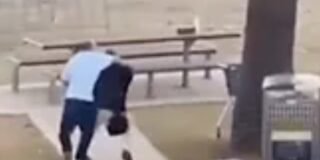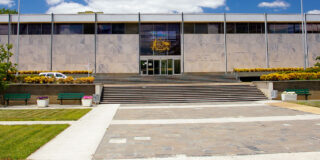In an opinion piece published in the Age newspaper, Yorta Yorta man Paul Briggs (2006) angrily rejected a proposal by Federal Indigenous Affairs Minister Mal Brough that Aboriginal culture be “showcased” by employing Aborigines from remote communities in five-star tourist venues on the Eastern seaboard. Briggs wrote:
The idea caught many a breath but not just because of its patronising nature. The minister had voiced what many Australians think, and that is that Australia’s ‘genuine’ Indigenous people can only be found in remoter northern and north-western Australia.
Briggs noted that in large part this was because Aborigines in southern Australia had largely “disappeared” — at least in the eyes and awareness of most of the non-Aboriginal Australian community. Academic Richard Broome (2005) contends that most non-Aboriginal Australians in southern Australia believe that Aboriginal culture no longer exists because of what he describes as the “colonial onslaught” which resulted in Aboriginal people being “significantly remade in the coloniser’s image, culturally, economically, and physically.” According to Broome most Victorian Aboriginal cultural and ceremonial life was destroyed by 1900, language was largely lost by the 1920s, Aboriginal social structure was reshaped by inter-marriage between regional groups and through inter-marriage with non-Indigenous people. He cites a survey conducted in 1994, which found that two-thirds of Victorian Indigenous families had non-Indigenous members. As a result the skin tones of most Victorian Aboriginals have become so “diluted” that many non-Aboriginal Victorians believe that Aboriginals and Aboriginal culture no longer exists (Broome, 2005: 375).
This problem of “dilution” is not confined to Victoria: Wiradjuri man Tommy Lyons, who was born in central New South Wales in 1914, described his heritage in the following way:
My mother was Wiradjuri mob and Irish. My grandfather on my mother’s side, old George Parker, had about 3,500 acres of land. He was a real Irishman. Mum was very fair, real thin-featured. She was very white and her features were different. She had the features more like Grandfather Parker and yet her mother was a full-blood, a Dargin by name. He had three daughters. There was two very fair. Aunty Mary was fair, but Aunty Stella, she threw back to the Dargins. She was dark. Mum was the youngest and was very fair, sharp features. My stepfather was partly Indian, Aborigine-Indian, although his people were pretty bloomin’ fair. It was hard to pick them out as Aborigines.(cited in Rintoul, 1993: 300-3001).
The problem is compounded by politicians, businesses and other individuals actively seeking to deny Aboriginals their heritage. Germaine Greer (2004: 27) contends that “whitefella energies have been directed towards confining and distancing Aboriginality” in such a way that politicians such as Paul Hasluck wished “to narrow down the term Australian Aboriginal to mean only those who do not live like Europeans,” and, more recently, mining companies attempting to reduce royalties due to Aboriginal landowners by having only those who still live under tribal law being categorised as Aboriginals. (This in spite of the fact that most people who identify themselves as Aboriginal live in towns and have intermarried with non-Aboriginals. According to Birrell and Hirst (2002: 23):
Only a minority of Aboriginals live in rural or remote areas. Most live in urban settings. Nearly one third of Australian residents who self-identified as Aboriginal and/or Torres Strait Islanders in the 2001 Census live in the capital cities of the states. …Then there is the issue of whom Aborigines live with, whether within or outside the capital cities. If we look at Aboriginal families in the capital cities we find very few in which an Aboriginal man and an Aboriginal woman are living together. According to data drawn for this analysis from the 2001 Census, 87 per cent of couples with an Aboriginal member were intermixed. That is they were composed of an Aboriginal man with a non-Aboriginal partner or an Aboriginal woman with a non-Aboriginal partner. On this test these metropolitan Aborigines are very well integrated into the wider society. A far greater proportion of first and second generation Greeks and Italians living in Australia marry within their own group than do Aborigines living in the capital cities.
Outside the state capitals Aboriginals are more likely to have Aboriginal partners, but, nevertheless, 60 per cent of all couples with an Aboriginal member were intermixed. Only outside Perth in Western Australia and Darwin in the Northern Territory are a majority of Aboriginal couple families with an Aboriginal member composed of both an Aboriginal man and an Aboriginal woman. Within the Northern Territory, other than Darwin, the great majority of families – 87 per cent – are purely Aboriginal. But couples with an Aboriginal member in the Northern Territory (other than in Darwin) amount to less tan 10 per cent of all such couples in Australia.
Birrell and Hirst (2002:23) note further that in 2001 intermixed couples made up 69 per cent of couples with an Aboriginal member. Thus, it seems that the norm in Australia, according to Paul Hasluck, is Aboriginals who ‘live like Europeans’ and who have limited contact with traditional tribal life.
At the macro-level the question of identity is important on at least two levels: political and social. At the political level it is inextricably linked to questions of funding and welfare support. The Federal Government defines an Aboriginal or Torres Strait person as someone who:
• is of Aboriginal or Torres Strait islander descent;
• identifies himself or herself as an Aboriginal person or Torres Strait Islander;
and
• is accepted as such by the Indigenous community in which he or she lives.
Research by Birrell and Hirst (2002: 26) found that more Australians than ever are identifying themselves as Aboriginal. In the 2001 census, 410,003 did so, up from 352,970 in 1996 and 227,593 in 1986. According to a 2006 Federal Government report, this growth is due in some part to the fact that “the Indigenous population has a younger age profile and higher birth rate than the non-Indigenous population; some 40 per cent of the Indigenous population are aged under 15 years compared to 20 per cent of the non-Indigenous population”(Commonwealth of Australia, 2006). The political implications of this Indigenous population growth is that successive Governments over the past three decades have attempted to reduce costs of Indigenous welfare funding by introducing the concept of “mutual obligation”, defined by the Department of Employment, Work Relations and Small Business (Commonwealth of Australia, 2007) as being based:
[on] a simple proposition – unemployed job seekers supported financially by the
community should:
actively seek work;
constantly strive to improve their competitiveness in the labour market; and
give something back to the community that supports them.”
While Broome (2005: 375) acknowledges that Aboriginal life in Victoria has greatly altered and that Aboriginal culture has been “reshaped” through inter-marriage with non-Aboriginals, he nevertheless contends that “Aboriginal attachment to country, to cultural group and kin, to family, and to Aboriginal core values remains indelible”. He quotes Sandra Neilson, a Gunai woman, who states:
You don’t stop being Aboriginal if your skin is lighter, as long as it’s in your heart and you believe you are. It’s basically an insult to Aboriginal people to ask them if they are half caste” (2005: 375).
In his condemnation of Mal Brough’s suggestion that Aboriginals be used to staff tourist attractions in Queensland, Briggs (2006) suggests that another reason that Aboriginal life has disappeared from the cultural landscape of Southern Victoria — except in negative terms — is the mass media’s failure to recognise and acknowledge the existence of Aboriginal culture and identity. Citing research done by Victoria’s Yorta Yorta community, he said that a 12-month survey of Victoria’s major print media found that 68% of reports on Indigenous issues “were devoted to issues and personalities of far north and north-western Indigenous communities. Only 18% of the coverage of Aboriginal issues related to Victorian Indigenous communities, and most of these stories related to problems of, or ‘caused’ by, Indigenous people”.
A sense of identity
For Briggs (2006) these findings relate to a far more serious problem facing southern Aboriginals — that of trying to gain, and maintain, a positive sense of identity. He suggests that an individual’s sense of identity comes from a shared tradition and shared cultural values that they can “hold on to and celebrate”.
This celebration is almost impossible when the dominant culture refuses to recognise the existence of the marginalised group — except as figments of a remote historical past. And as Briggs states, the notion of Aboriginal identity is further threatened because “our communities are usually tiny minorities embedded in broadly successful and prosperous urban settings.”
The Yorta Yorta people failed in their bid for native title because the courts deemed that their community no longer existed as a viable culture with a widely shared sense of identity. The Yorta Yorta, the courts ruled, had disappeared in history.



The real issue underlining all of this is one of colour. As I’ve said before, no-one expects a Jew, a German, a Brit to prove their heritage. They cannot be identified by the colour of their skin. Why is that a person who identifies with a culture that has a non-white skin tone must look the part? A half caste Aborigine who is not good enough to be a white man, but is too pale to be allowed to be raised by his black parents is in no man’s land. Surely we learned our lesson from the Cronulla Riots … or perhaps not?